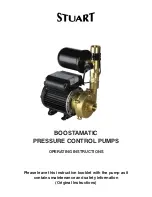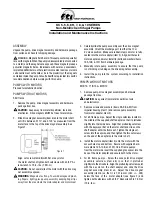
2. SOLDERING
OPERATION
OSIK-30
Usage Tips
1. Ensure the solder used is appropriate for the application.
2. Press the hot soldering tip into
a damp sponge occasionally
to remove any excess solder
that may have accumulated on
the tip. Do not hold it there for
too long as this can burn the
sponge.
WARNING!
DO NOT HOLD THE SPONGE. PLACE THE
SPONGE ON THE TABLE AND WIPE THE SOLDERING
TIP AGAINST IT.
3. Soldering provides an electrical connection between parts, it
does not provide a strong mechanical joint. When soldering
wires ensure that they are joined properly by twisting the
exposed wires around each other before soldering.
4. Use the soldering iron to heat the workpiece not the solder wire.
Pressing the soldering tip against the solder wire will cause the
solder to melt onto the tip instead of the workpiece.
5. Do not use more solder than required. Use just enough to make
contact between the workpieces.
6. Clean the workpiece with steel wool or fine sandpaper if it is not
clean. This provides a better surface for the solder to adhere to
and a better electrical contact between parts.
Soldering
1. Rest the soldering iron on the
stand.
2. Wet the sponge and squeeze
out any excess liquid. Place the
damp sponge in the tray on the
work station.
3. Plug the power cord into a mains socket and allow the tool to
heat up.
4. Use the clamps on the work
station to hold your workpieces
steady.
5. Use the soldering tip to heat the
workpiece up.
6. Hold the solder wire against
the heated workpiece. The
workpiece should be sufficiently
heated that the solder melts and
flows into the join.
Note:
If the solder wire doesn’t
melt when touched to the
workpiece, then the workpiece has not heated sufficiently. Remove
the solder wire and allow the soldering iron to continue heating up
the workpiece.
7. Once enough solder has melted into the join, remove the solder
wire and then the soldering tip from the workpiece.
8. Allow the solder to cool and solidify.
30W
SOLDERING IRON






















